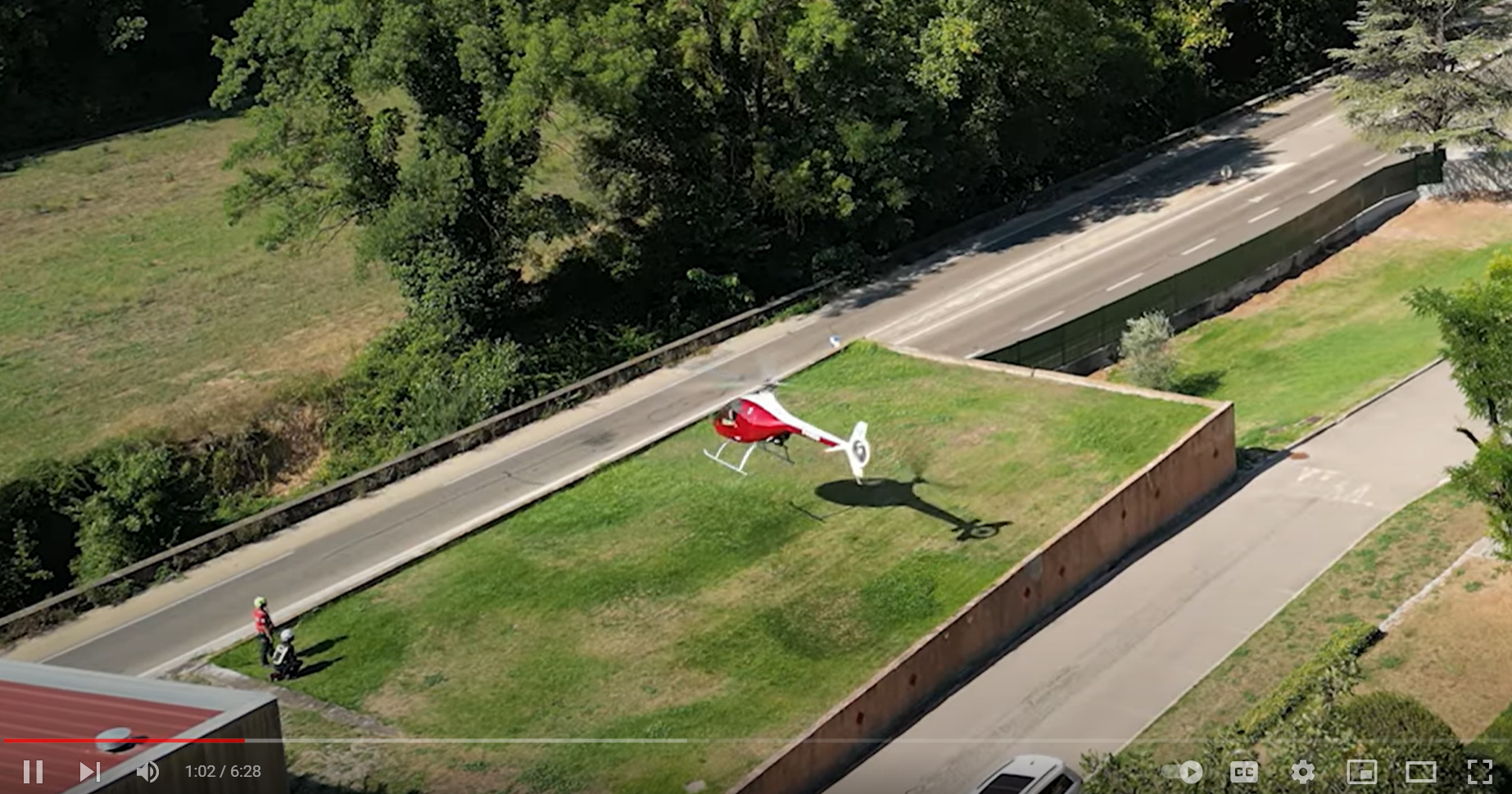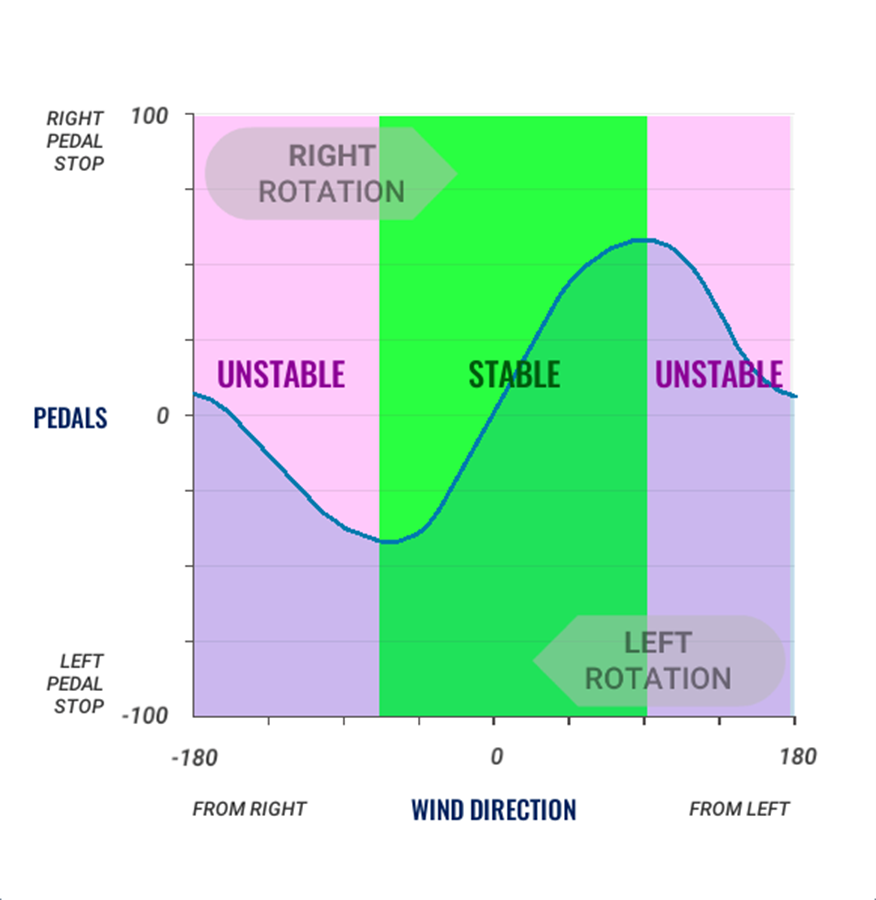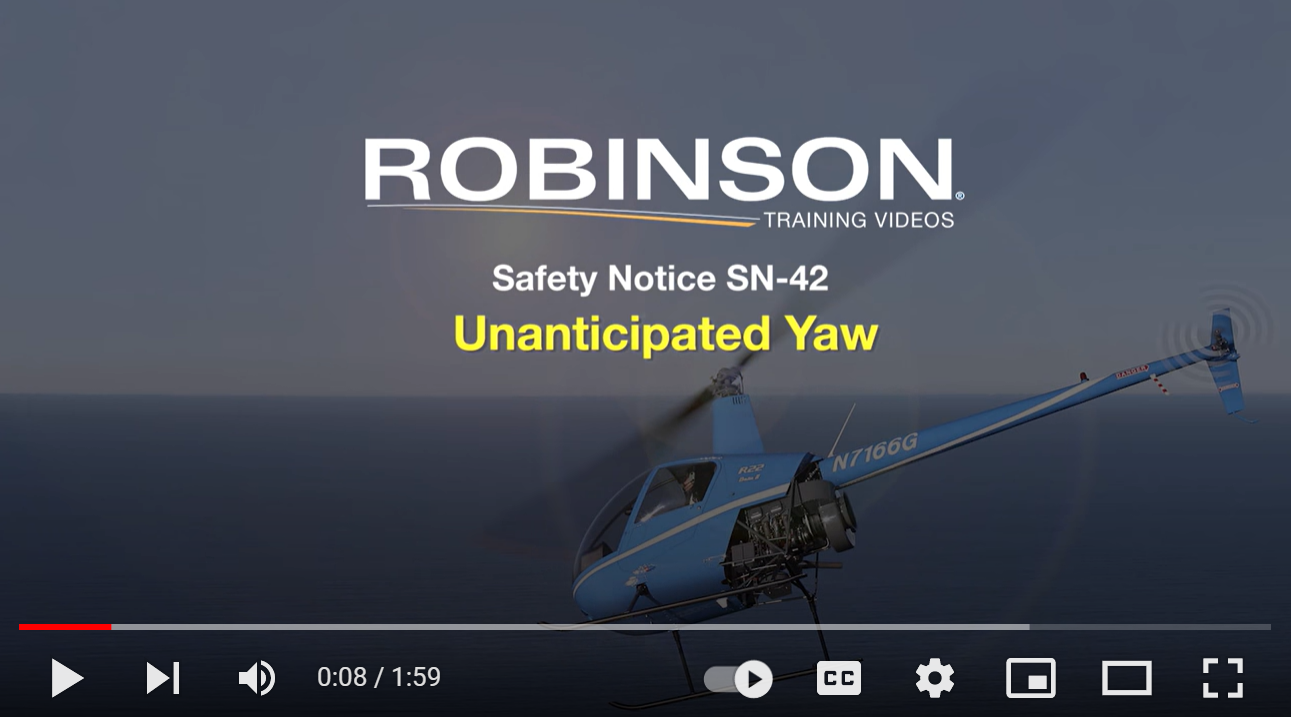Unanticipated yaw is a high-risk phenomenon that can result in Loss of Control In-Flight (LoC-I) accidents, the number one killer also for rotorcraft. This video is about a professional pilot that performs a training landing as part of an exercise with firefighters. During the short final, he experiences and recovers from unanticipated yaw. Pilots must be aware of and understand the risk of an unanticipated yaw and know how to prevent and recover from it. The key message is: Be prepared to experience unanticipated yaw and should that happen, decisively apply full opposite pedal to stop the yaw and recover control over the situation.
EASA video Handling Unanticipated Yaw

https://youtu.be/mg5WtgthVyc
This EASA video 2023 Unanticipated Yaw was developed with Airbus Helicopters by Mathieu Vandenavenne, Safety for Flight with the contribution of Jonny Greenall, Balearic Helicopters, both from the ESPN-R Training team.
Unanticipated yaw in a recce flight while landing
Matthew is a pilot for a commercial operator, every summer they carry out support missions with local firefighters for forest fire protection.
Before the start of the season, he is performing a recce flight of a new landing area that will be used during the summer.
For this flight, Matthew flies a Cabri G2 helicopter dedicated for training in the company. After a short flight, he completes a recce before the landing.
Matthew performs the final approach and increases the power with the collective to set the helicopter in a hover in ground effect.
Concentrating on the obstacles around the landing site and the available power to land, Matthew suddenly feels the nose of the helicopter yawing to the left, starting a spin.
Matthew slightly increases his movement with the right pedal to stop the left rotation, but it doesn’t stop, which forces him to full deflection on the right yaw pedal.
After a 360 spin above the ground, the helicopter stops its left rotation.
Matthew lands the helicopter and shut down the engine, wondering what happened.
What happened?
What happened to Matthew is unanticipated yaw.
This phenomenon is an unanticipated or unintended rotation of the helicopter about the yaw axis. It occurs when the pedal input is not appropriate and the helicopter suffers a sudden and unexpected yaw.
It concerns all type of helicopters with a single main rotor, clockwise and anticlockwise rotor types.
Check this diagram detailed and explained in the Airbus Unity WebGL Player | FlightPhysics (novae-group.com) application:

For a given wind velocity and direction, temperature, pressure and collective input, the curve represents the necessary pedal input to keep the helicopter steady on the yaw axis, related to the angle between the longitudinal axis of the helicopter and again the wind direction.
Wind force also plays as a decisive role.
A large pedal input commands a rotation that will continue until you stop it with an opposite input. But a little variation of the wind direction results in a rotation as the helicopter changes its position along the curve.
It happens quite frequently that pilots get puzzled because they do not anticipate factors such as the effect of a changing wind direction relative to the helicopter position when yawing.
There are two areas on this curve. In the unstable area, a small variation of the wind direction leads to a large variation of heading. For example, when you are taxiing with a rear wind, you can be overcontrolling with your feet on the pedals.
A second point is the higher the airspeed or the windspeed, the higher is the curve. For the same rotation on the yaw axis, the required inputs on the pedals are larger with airspeed than to the hover.
The third point is when the pilot raises the collective pitch, the curve goes up. That’s why to keep a direction steady, the pilot must use a proper pedal input.
When can unanticipated yaw occur?
Unanticipated yaw can occur in the following conditions:
- During take-off to hover or transition from hover to forward flight, when raising the collective without pedal input compensation.
- On final approach when reducing the speed of helicopter, more power is needed to overcome the rate of descent and loss of translational lift. That is what happened to Matthew in this video.
- When hovering with a variation of wind directions and gusts, or
- Whilst taxiing and the pilot commands a rotation while the pedal position is close to requiring opposite pedal to counteract the direction of the wind.
Most of the time, unanticipated yaw doesn’t result from a mechanical failure but from improper pedal controls.
Training in a simulator
Training to manage unanticipated yaw can be done safely in a simulator, regardless of the type of helicopter. In the video, Matthew flies a Cabri G2 but trains in a H125 flight Virtual Reality motion training device.
Switching whenever possible and appropriate to simulator training is a priority in the Rotorcraft Safety Roadmap | EASA (europa.eu).
How to stop the rotation?
Unanticipated yaw will not stop without appropriate action!
Decisively apply full and strong action on the opposite pedal to stop the yaw and recover control over the situation.
The primary effect of this action will be to slow down the rotation. When the rotation stops and reverts, adjust the pedal position to stabilise the helicopter.
You have no other choice but to wait to reach an area of wind angle where the helicopter may stabilise again on the yaw axis.
Apply full pedal! if the action is not strong enough or the pedal fully extended, the rotation slows down for a while but accelerates again afterwards.
Pre-flight pedal check
During all pre-start procedures, it is therefore essential to check the full pedal travel, memorise and feel the position in your legs and remember why you check it.
Tail rotor failure or technical flight controls failure?
Unanticipated yaw occurs by far more often than a tail rotor failure or a technical flight controls failure, the latter of which have a negligible percentage in terms of yaw control related accident root causes.
However, if after a while the rotation does not decelerate despite full opposite pedal, it may be due to a technical failure for which a precise procedure exists in the RFM. In the event of a technical failure there will be other symptoms just before the rotation begins such as vibrations, noise, chock, etc.
References
Unanticipated yaw at low speed is the subject of two Airbus Helicopters Safety Information Notices (SIN) completed by two Information Notices (IN) published by Airbus Helicopters in July 2019 and September 2020:
SIN No 3297-S-00 for helicopters on which the main rotor rotates clockwise and on which the loss of control in yaw generally occurs to the left, associated to IN n° 3539-I-00 Fenestron versus Conventional Tail Rotor (CTR).
SIN No 3298-S-00 for helicopters on which the main rotor rotates counterclockwise and on which the loss of control in yaw generally occurs to the right, associated to IN n° 3540-I-00 Fenestron versus Conventional Tail Rotor (CTR).
Learn more about unanticipated yaw on the Airbus Helicopters FlightPhysics web application: Unity WebGL Player | FlightPhysics (novae-group.com).
Unanticipated yaw was also the subject of a Robinson Helicopter Safety Notice (SN) published in May 2013: SN-42, Unanticipated Yaw: sn42.pdf (robinsonheli.com), associated to a training video on Robinson Helicopter Company - YouTube:
VAST ESPN-R Safety Workshop 2023
Unanticipated Yaw was the subject of the year of the VAST ESPN-R Safety Workshop - Unanticipated Yaw (europeanrotors.eu) organised in EUROPEAN CONTROL 2023 in Madrid, where this EASA video was released.
Proceedings are published in EASA Rotorcraft and VTOL Safety Symposium 2023 - Madrid, Spain (IFEMA) - Physical | EASA (europa.eu).
They include a highly recommended technical presentation by Thomas Gogel, Airbus Helicopters entitled What Is Unintended Yaw? The Science Behind the Words - Flight Physical Insights to Help Preventing Loss of Yaw Control Accidents.

Please log in or sign up to comment.